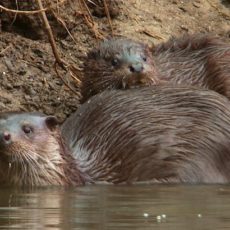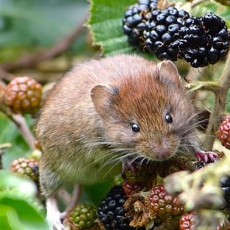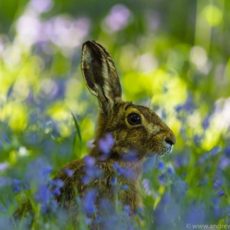Guest post by young wildlife expert Alex White.
Sat amongst the bluebells on a late spring evening, a gentle breeze tickling my nose, I am waiting for the first black nose to appear. It is a moment of excitement, tension and a little bit of apprehension.
Every creature is just settling down for the night, blackbirds are singing their final song, wood pigeons are flapping about high in the branches, looking for their roost for the night. Through the trees I can see a couple of roe deer silently moving in the dimming light. I hear a rustle, is this a badger? No, it’s a rat moving through the grass! In the distance the church bells are ringing and I can hear traffic on the dual carriageway reminding me that I’m not far from people.
Then I hear the chattering of a badger behind the brambles and I know they are now awake. I slowly adjust my legs, get my camera ready, just as the first black and white face appears. Once one badger emerges, three more follow, then, finally one of this year’s cubs appears. Stumbling, unsteady on its feet.
Each time I see a badger it always brings a smile to my face.
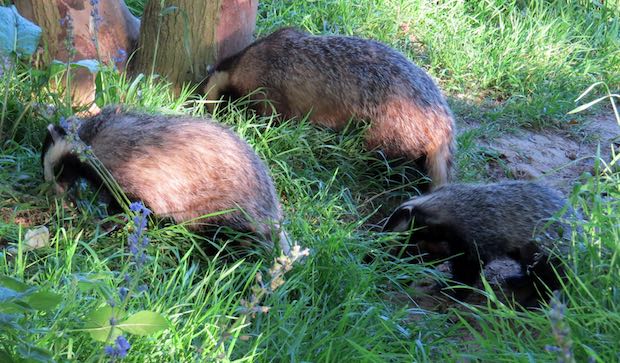
Badgers are a distinguished member of the mustelid family
Badgers (Meles meles) are part of the mustelid family, which includes otters and polecats. They are easily recognised by their black and white head; weigh between eight to twelve kilograms and are about a metre from nose to tail. Badgers are omnivores and eat fruit, berries, worms and small mammals. They live in setts with a ‘D on its side’ shaped entrance, their paths can be seen criss-crossing the countryside.
I have been watching badgers since I was three years old
I am very lucky to have a large number of different badger setts within walking distance of my house, a couple of the badgers even come up to visit my garden. Over the past few years I have started to recognise particular badgers, through facial markings, or the ones with damaged eyes or ears. I have watched young ones have young of their own and unfortunately seen two run over on the country road outside my house.
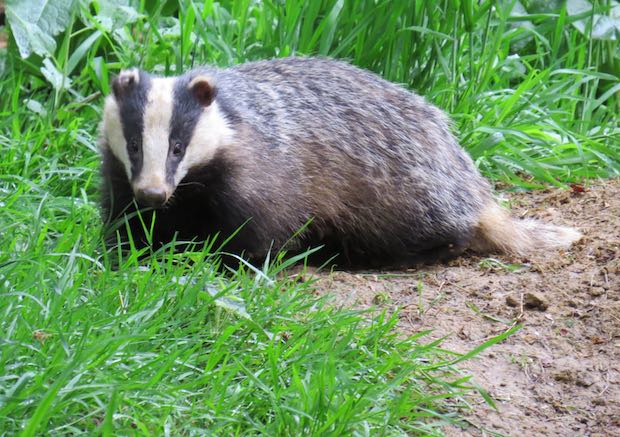
I have had the privilege to witness many different behaviours including playing, grooming, digging, fighting and mating.
As well as watching and photographing badgers, I use a trail camera to see them behaving naturally. The trail camera can be there when I can’t and the badgers are very used to seeing it. One badger seems to actively look for the camera as she always appears nose right up to the lens!
My thoughts on the badger cull
Badgers and the badger cull has been in the news frequently over the past few years due to the current Governments belief that culling badgers will reduce the spread of bovine tuberculosis (bovine TB). Bovine TB is an infectious disease that affects cattle, leading to tens of thousands of cattle to be killed every year. Scientific evidence shows that culling badgers will have very little effect on bovine TB. The badger cull is not only inhumane, but very expensive when there are alternative methods of controlling bovine TB such as better biosecurity, vaccinating badgers and improved bovine TB testing.
Badgers and their setts are a protected species under the Protection of Badgers Act 1992, but unfortunately badgers are still snared, shot, displaced by building developments and it is estimated that around 10,000 badgers every year die through badger digging and baiting with dogs.
To learning more about badgers and get involved, you can join The Badger Trust or your local badger group.
National Badger day 2015 produced a short film on Badgers.
You can also report dead badgers on the roadside to your local Badger group, Mammals on the Roads (PTES) or Project Splatter (Cardiff University) as the data is important.
Alex White
Find Alex at @appletonwild and his wildlife blog.

